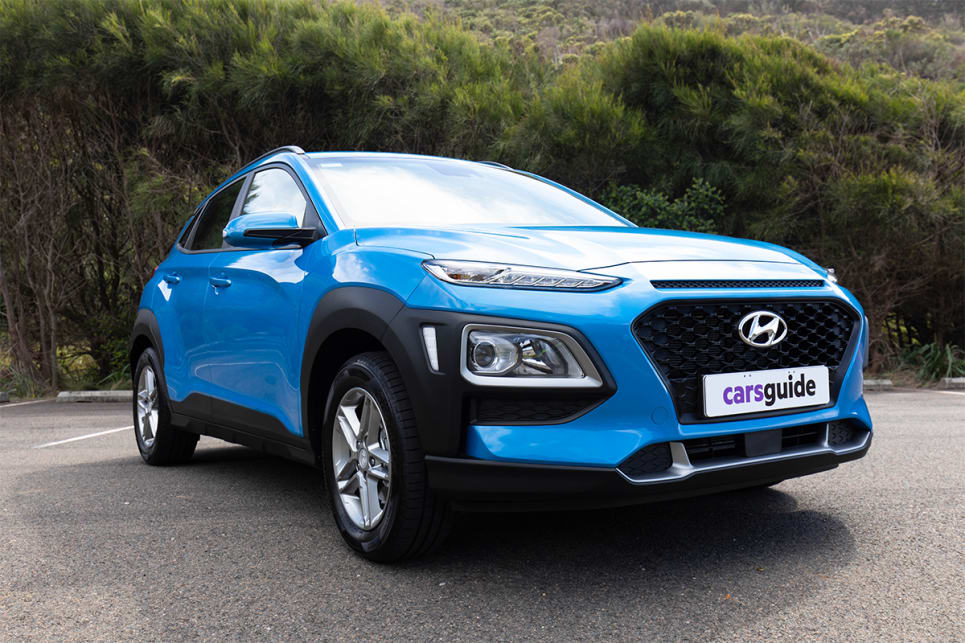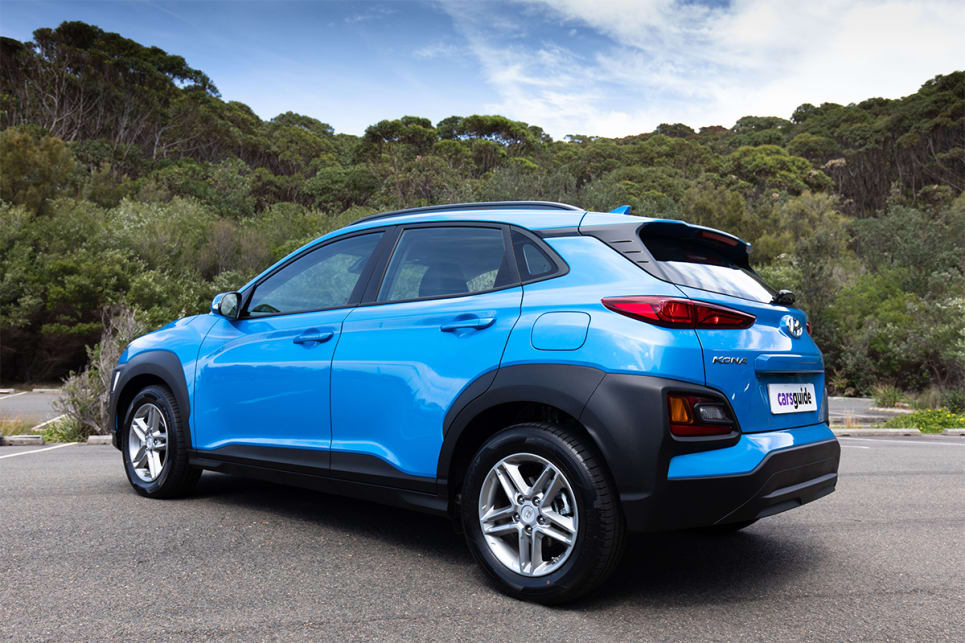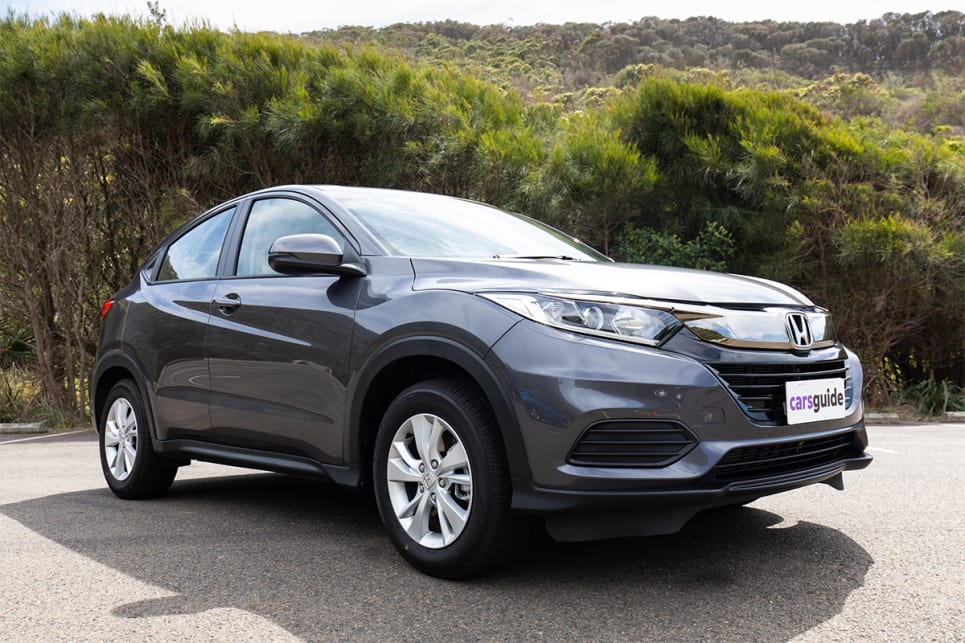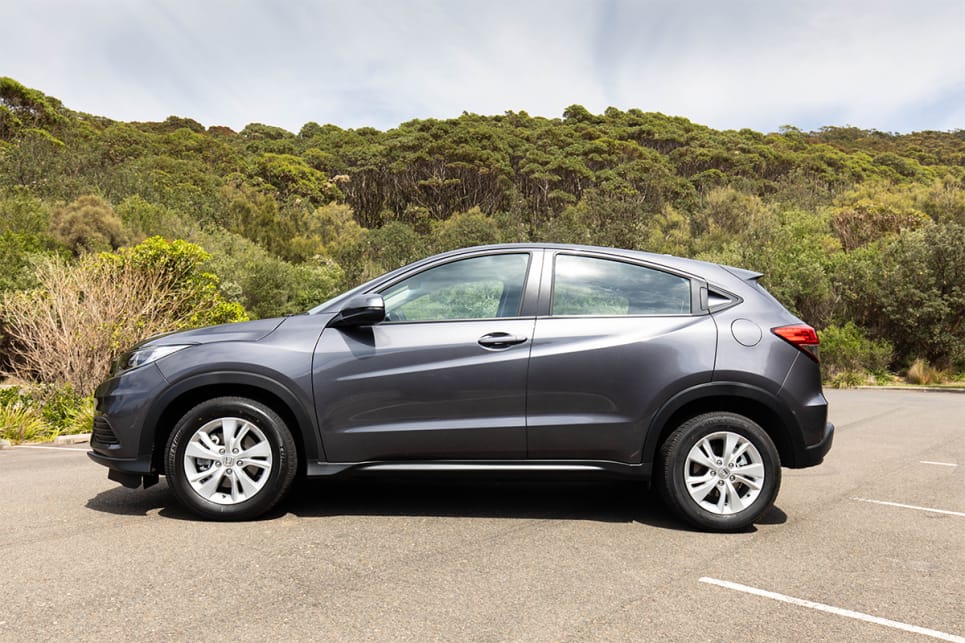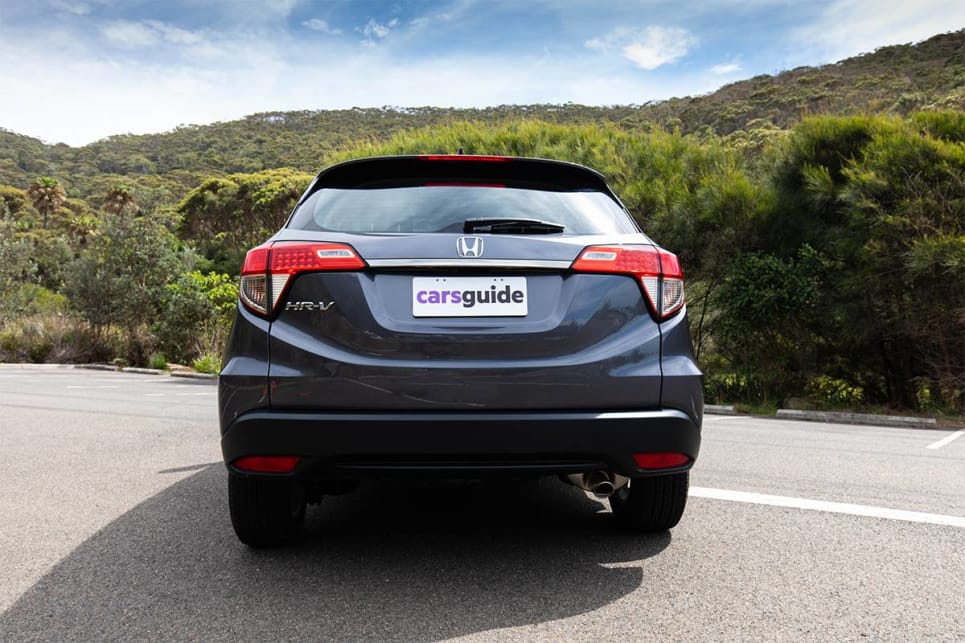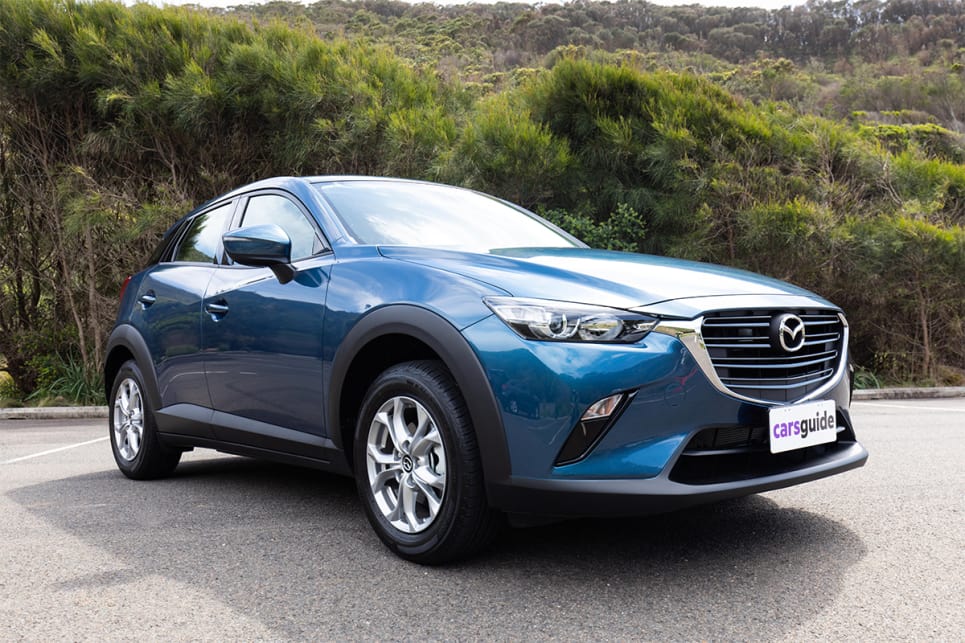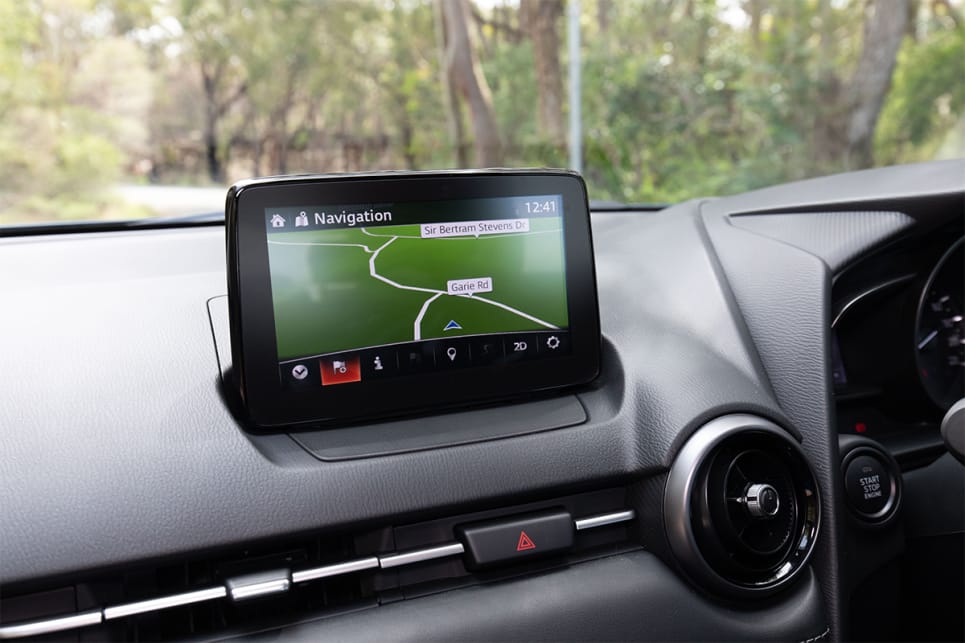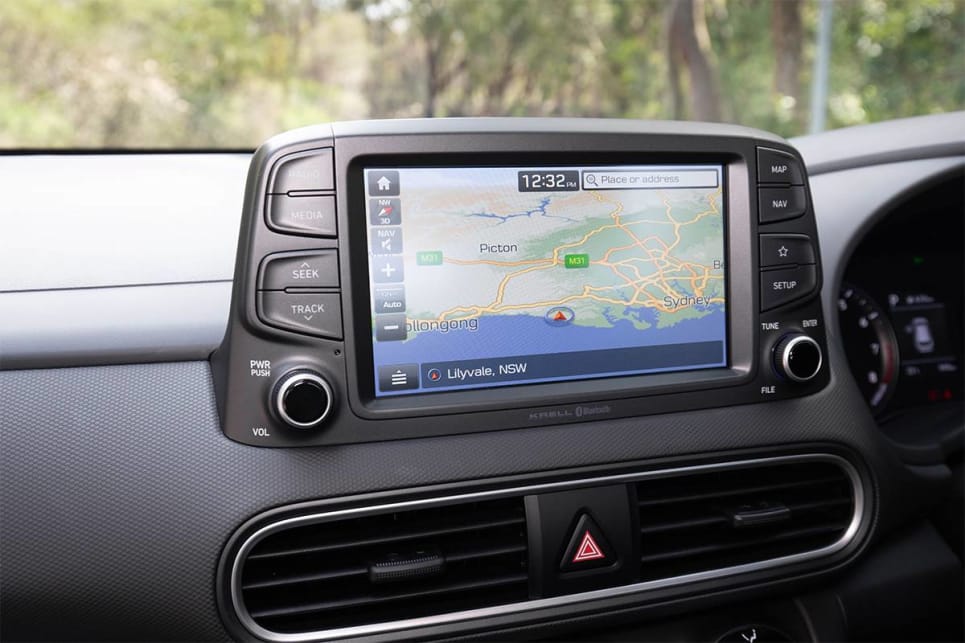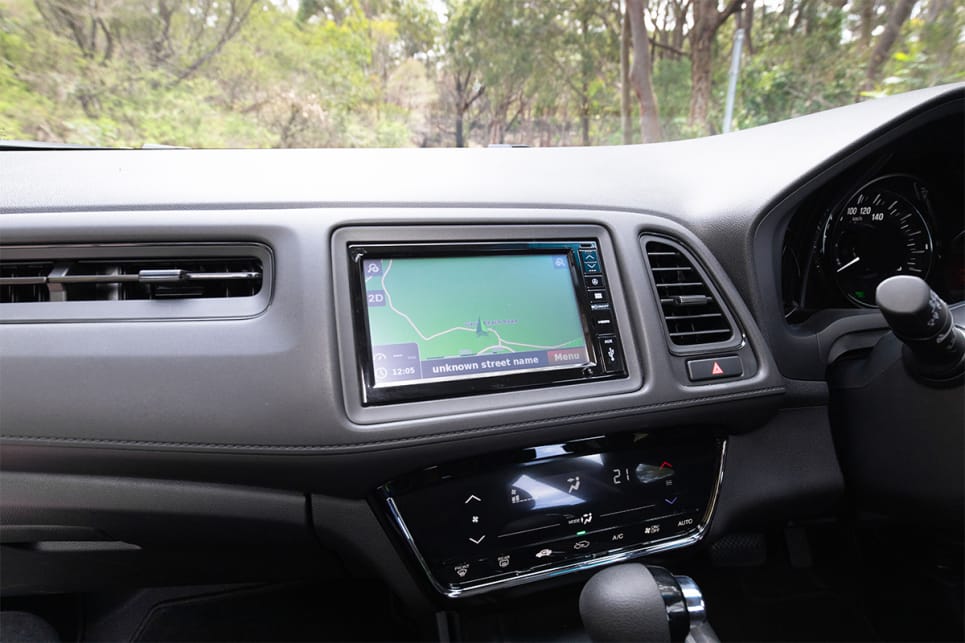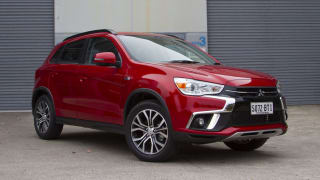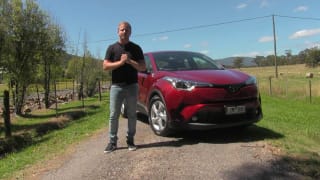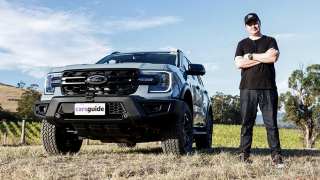Every one of these cars has a touchscreen media system with Bluetooth phone and audio streaming and USB connectivity - plus all three have sat nav. But there are some differences in terms of their usability.
The Hyundai’s massive, newly added 8.0-inch touch screen is as close to perfect as you can get in this segment, with the best clarity, graphics and the benchmark smartphone connectivity of Apple CarPlay and Android Auto, which the others don’t get. It also rocks a tiptop Krell eight-speaker sound system with subwoofer, even in the low grades, which was superior to the others on offer in this mix (both with six speakers).
That said, the Hyundai is quite plain in terms of its cabin design, a letdown considering its extroverted exterior.
Loose item storage throughout the Kona's cabin is good, and there are no serious gripes with the usability of the space. There’s a pair of smallish cupholders, a decent cubby in front of the gear selector, and good sized door pockets.
The lack of an electric park brake (which both rivals have) and the abundance of hard plastics in the cabin gives away that you’re not in an expensive SUV. There’s even hard plastic on the elbow rests, which is very uncomfortable. But, it’s the only one here with a digital speedo.
While you might struggle to like the exterior, the interior of the Kona is definitely inoffensive. It’s just a bit, well, predictable.
-
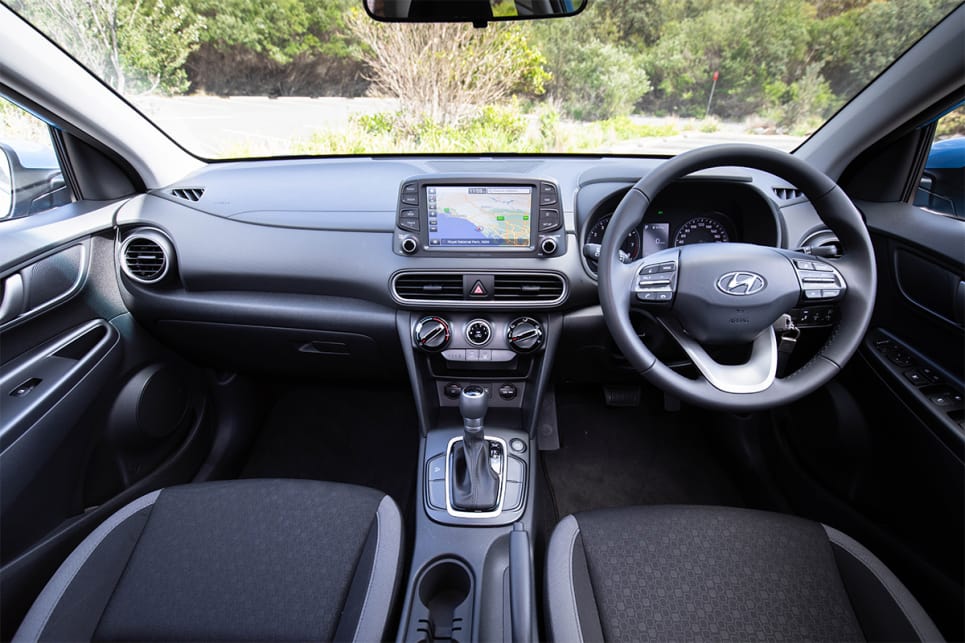 The Hyundai is quite plain in terms of its cabin design. (image credit: Dean McCartney)
The Hyundai is quite plain in terms of its cabin design. (image credit: Dean McCartney)
-
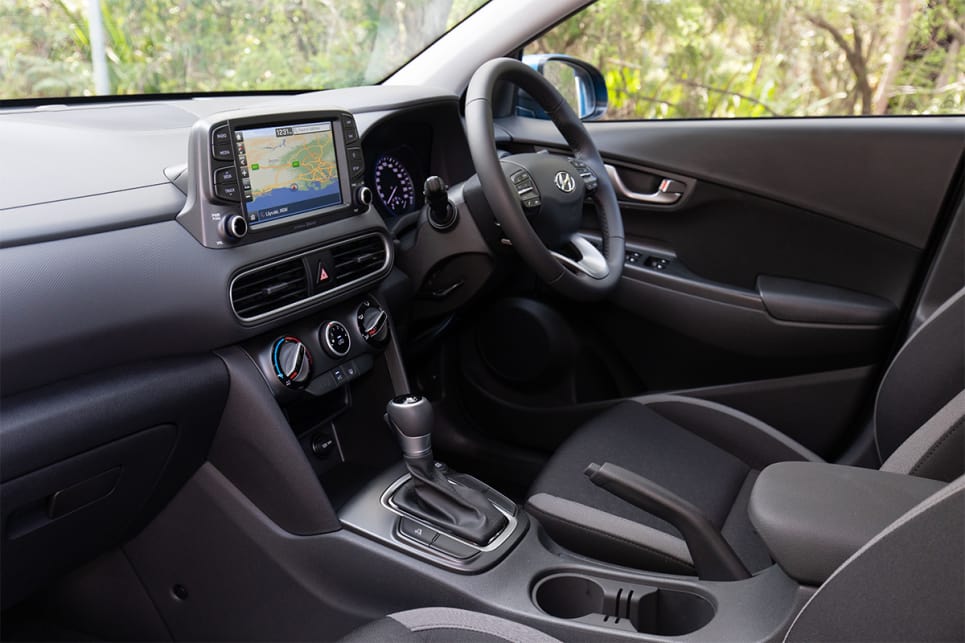 Loose item storage throughout the Kona's cabin is good. (image credit: Dean McCartney)
Loose item storage throughout the Kona's cabin is good. (image credit: Dean McCartney)
-
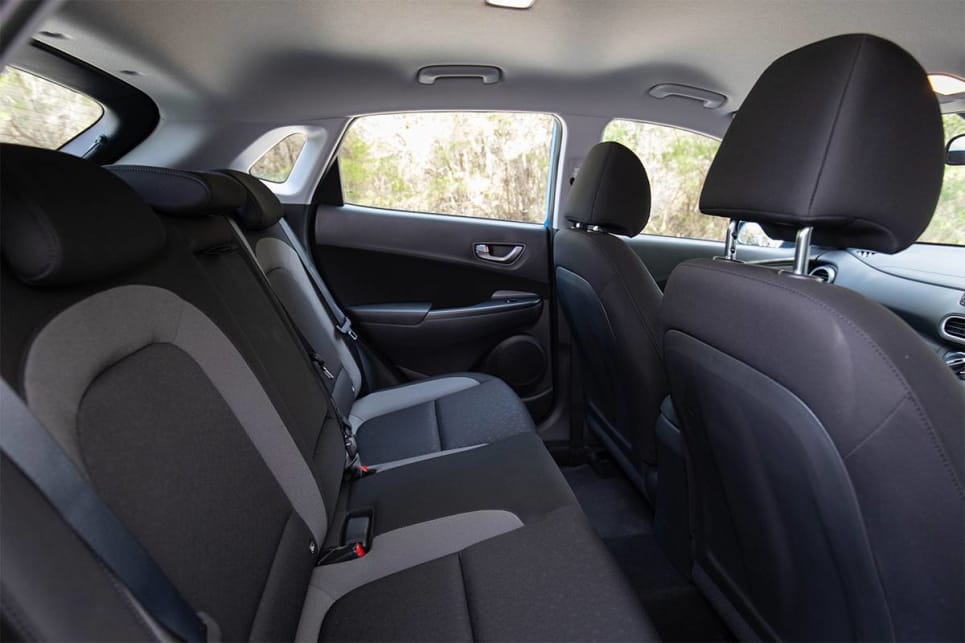 The Hyundai offers slightly better rear seat room than the Mazda. (image credit: Dean McCartney)
The Hyundai offers slightly better rear seat room than the Mazda. (image credit: Dean McCartney)
The Honda is almost as plain as the Hyundai, but at least it gets a bit of soft material on the dash - if you can look past the pretend stitching.
It also gets digital climate control, where the other two cars here have knobs for the air con, and of course, it has typical Honda practicality throughout.
There’s a big centre console area that you can store phones and wallets and drinks in, and there’s a second shelf area down low. Oddly, though, it lacks some storage options like centre cup holders in the back (and no centre armrest back there, either), and it’s the only one without a sunglass holder.
It’s a shame the USB port for the media system comes out of the edge of the screen - it looks really messy when your smartphone is plugged in. And the Honda’s 7.0-inch infotainment system is pretty poor by today’s standards. The graphics are almost ‘90s-like, and there’s not a lot of intuitiveness to the menus either. The lack of a volume knob is annoying as well.
-
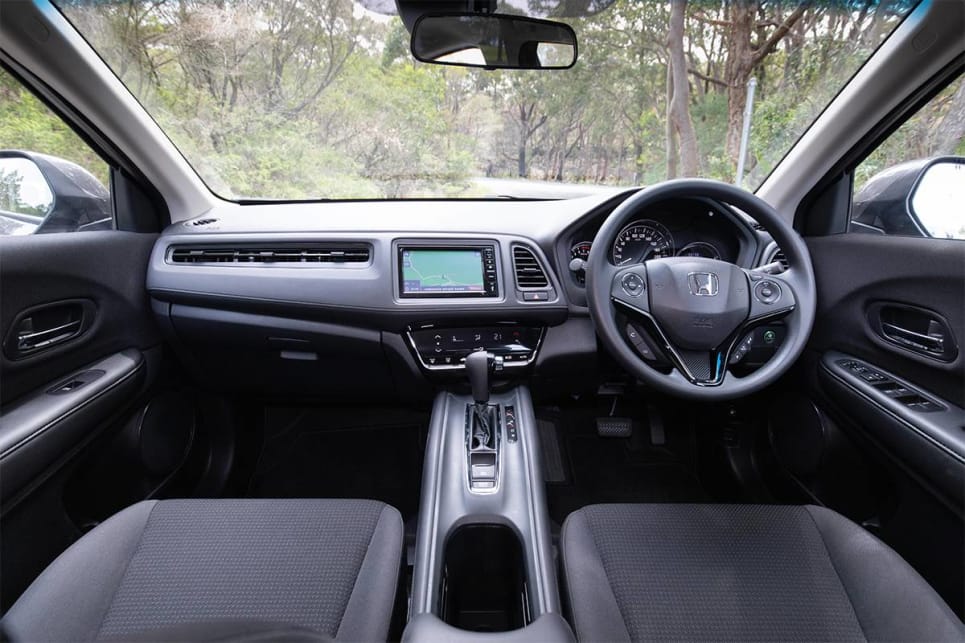 The Honda is almost as plain as the Hyundai, but at least it gets a bit of soft material on the dash. (image credit: Dean McCartney)
The Honda is almost as plain as the Hyundai, but at least it gets a bit of soft material on the dash. (image credit: Dean McCartney)
-
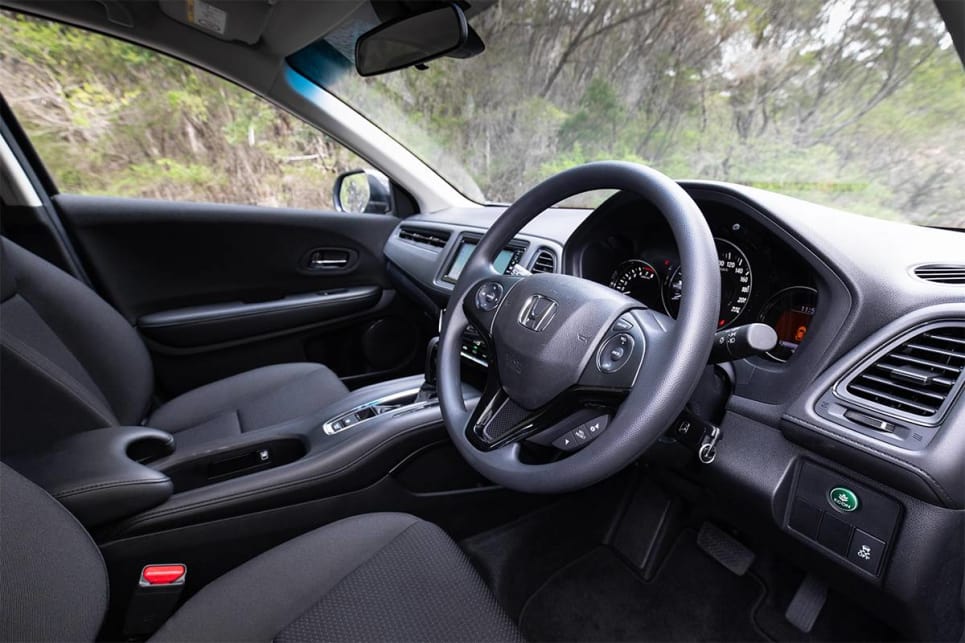 There’s a big centre console area that you can store phones and wallets and drinks in. (image credit: Dean McCartney)
There’s a big centre console area that you can store phones and wallets and drinks in. (image credit: Dean McCartney)
-
 The Honda has limousine-like space in the back. (image credit: Dean McCartney)
The Honda has limousine-like space in the back. (image credit: Dean McCartney)
The Mazda steps things up in terms of front cabin presentation - it’s more appealing as you sit inside it, offering additional visual pizzazz and style. The materials look better at a glance, and it feels a touch more plush in here, especially considering these three are all close in terms of their asking prices. But you mightn’t want to look too closely at the fonts used in here. I’ve counted about five different typefaces just on the dash and steering wheel.
There’s a big centre console bin with adjustable cup/bottle holders, although there’s not a whole lot of room for other odds and ends, with comparatively small door pockets.
Items like push-button start are nice additions to take your mind off a few of the shortfalls. And while the dashtop media screen is a 7.0-inch unit, it looks a lot smaller. The Mazda is the only one with a rotary dial to control the screen (which is also touch capacitive at a standstill) - but the system can be hard to navigate.
-
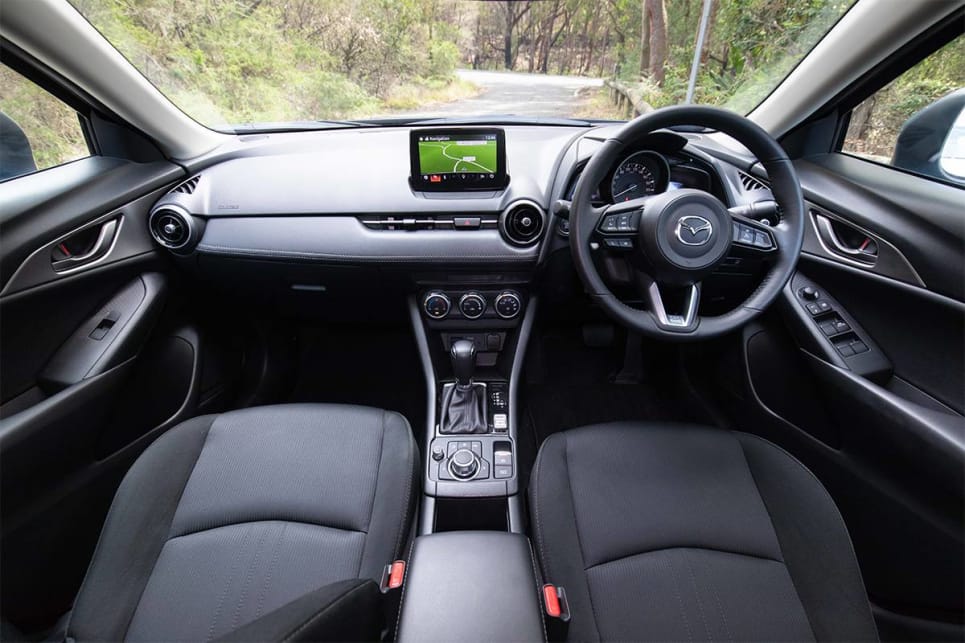 The Mazda steps things up in terms of front cabin presentation - it’s more appealing as you sit inside it. (image credit: Dean McCartney)
The Mazda steps things up in terms of front cabin presentation - it’s more appealing as you sit inside it. (image credit: Dean McCartney)
-
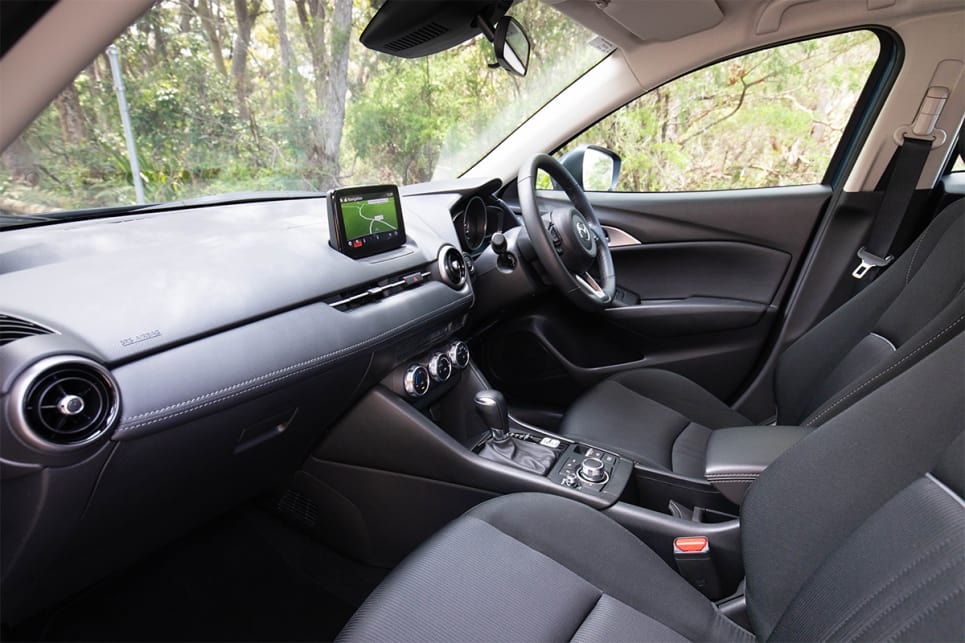 The materials look better at a glance, and it feels a touch more plush in the CX-3. (image credit: Dean McCartney)
The materials look better at a glance, and it feels a touch more plush in the CX-3. (image credit: Dean McCartney)
-
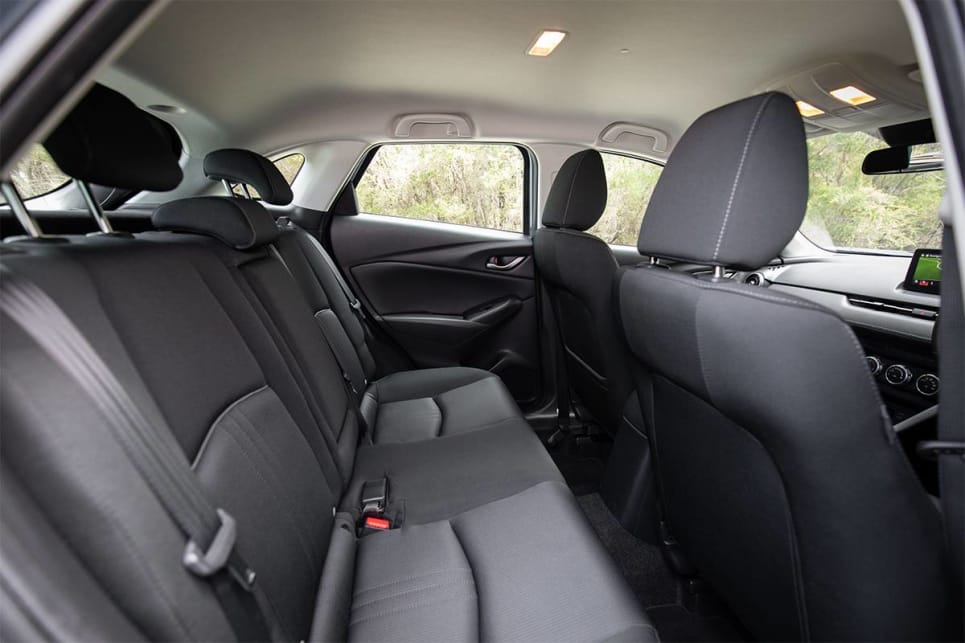 The Mazda offers a very cushy seat in the back. (image credit: Dean McCartney)
The Mazda offers a very cushy seat in the back. (image credit: Dean McCartney)
Now, for family buyers, practicality will also be very high on the ‘must haves’ list. How many seats? The answer for each is five, but there are some marked differences in how practical each is. None have rear air vents, which is disappointing, and at this price point there are no rear seat charging (USB or 12-volt) options, either.
At six feet (182cm) tall, I set the driver’s seat for me to get an idea of rear space - and it was night and day.
The Honda has limousine-like space in the back, more easily coping with long-limbed occupants by offering handfuls of space between rear-seat-knees and seat-back, and more comfortably fitting three adults across the back seat, too. It has no centre armrest and no cup holders, but there are big door pockets and a central bottle holder, too.
The Mazda offers a very cushy seat in the back, so much so that it lacks support in corners on the edges of the seat. It also suffers the worst legroom of this trio, and while headroom is okay, three across is almost impossible due to the big centre tunnel in the floor and its bulky doors. At least it has a centre armrest and cup holders.
The Hyundai is the middle ground, offering slightly better rear seat room than the Mazda - but not by much. Its seats are a bit more supportive than the other two, but its rear window line is quite high, so little ones mightn’t get a view out. There’s a flip down arm rest, but you don’t get any map pockets here - the others have one each.
All three models have ISOFIX baby seat anchor points and three top tether points. Annoyingly, however, the Honda has a ceiling mount centre belt and top tether. The others have all top tethers on the rear seat backs.
Now, boot space / luggage capacity.
The Honda HR-V has boot dimensions of 437 litres of with the back seats up, and 1462L with them folded down completely flat. The Hyundai Kona has a lot less storage space - 361L seats up/1143L seats down, and they go fairly flat. The Mazda CX-3’s boot size is minuscule, with its compact exterior dimensions making for a 264L boot with rear seats up and 1174L seats down (there’s a large stepped section to contend with).
-
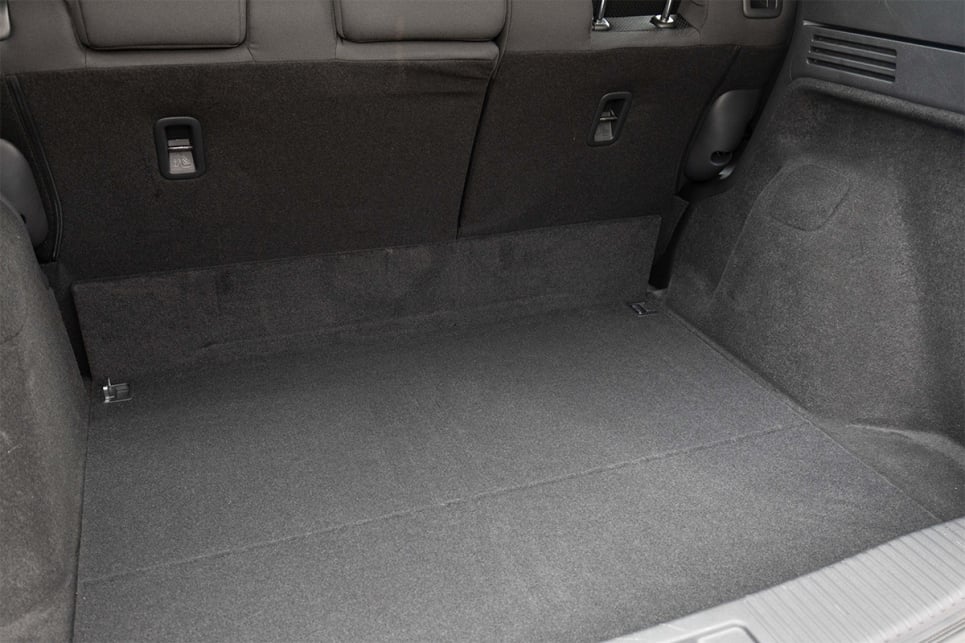 The Honda HR-V has boot dimensions of 437 litres. (image credit: Dean McCartney)
The Honda HR-V has boot dimensions of 437 litres. (image credit: Dean McCartney)
-
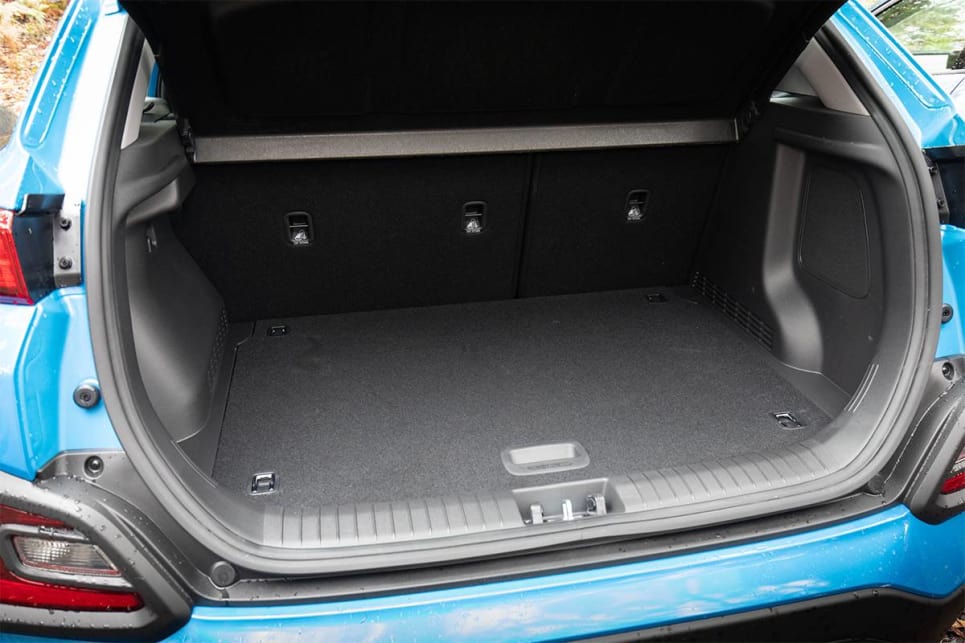 With the rear seats up, the Kona has 361 litres of boot space. (image credit: Dean McCartney)
With the rear seats up, the Kona has 361 litres of boot space. (image credit: Dean McCartney)
-
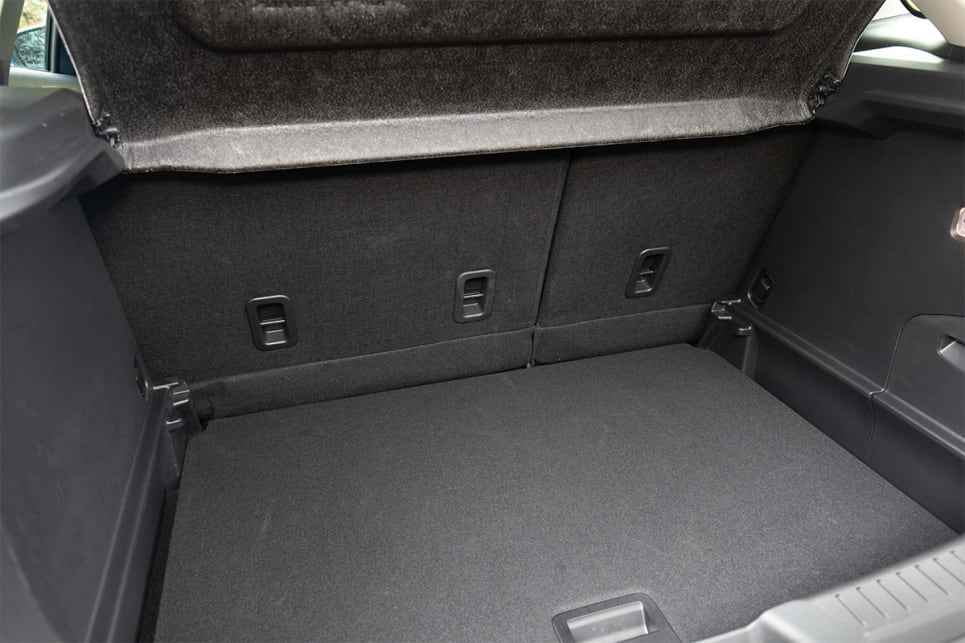 The Mazda CX-3’s boot size is minuscule, with only 264 litres. (image credit: Dean McCartney)
The Mazda CX-3’s boot size is minuscule, with only 264 litres. (image credit: Dean McCartney)
Under the boot of all three of these models is a space-saver spare tyre. Our Honda had a nice cargo liner, and while its foldable/removable cargo cover isn’t to all tastes, it does open up the space really nicely.
Acknowledging the above figures, we attempted to fit the same stuff in each of these three cars - the CarsGuide pram and a pair of hard-cover suitcases. This test offered a good indication of where each of these models stacks up in terms of family-friendliness.
-
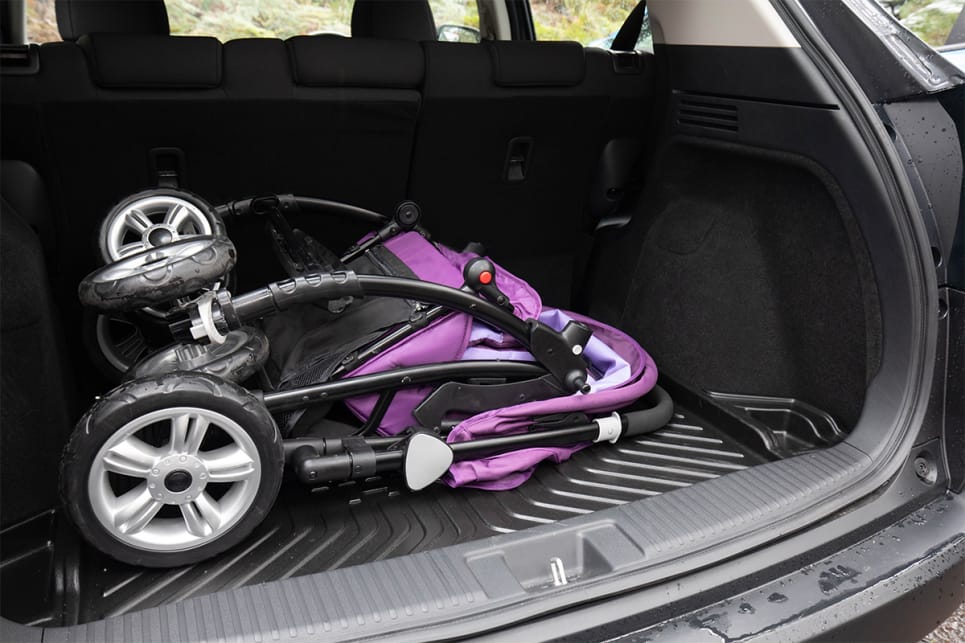 The HR-V easily copes with our two suitcases, or the pram. (image credit: Dean McCartney)
The HR-V easily copes with our two suitcases, or the pram. (image credit: Dean McCartney)
-
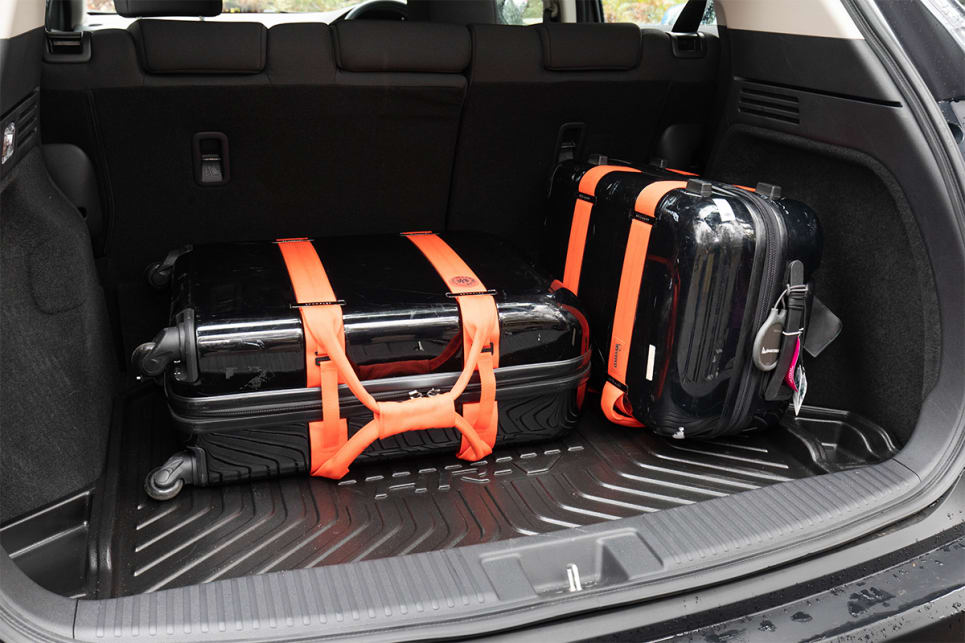 The only option if you need a big boot is the Honda. (image credit: Dean McCartney)
The only option if you need a big boot is the Honda. (image credit: Dean McCartney)
-
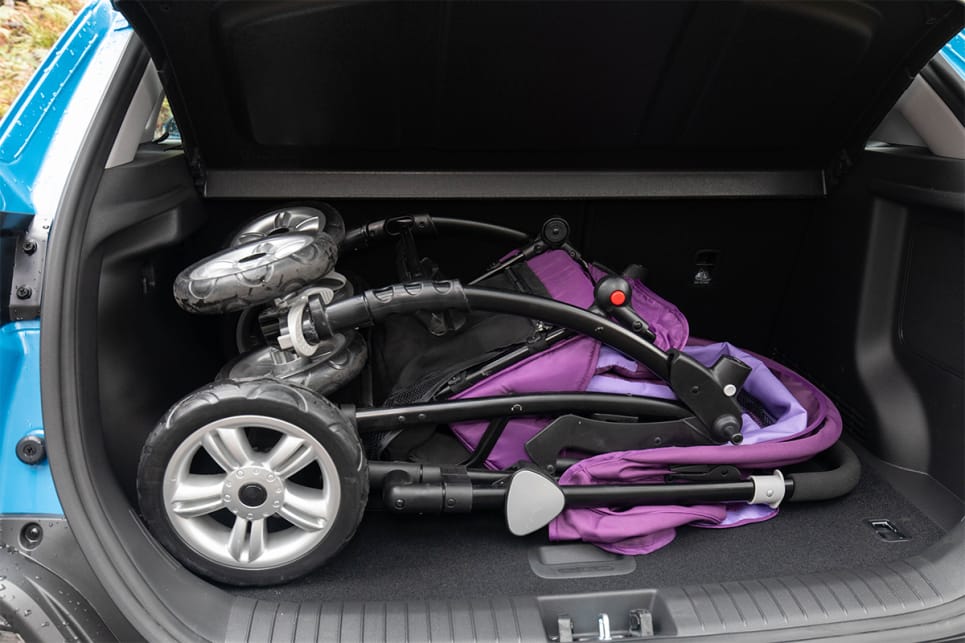 The Kona's boot is too small to deal with a pram and all the baby stuff that comes with it. (image credit: Dean McCartney)
The Kona's boot is too small to deal with a pram and all the baby stuff that comes with it. (image credit: Dean McCartney)
-
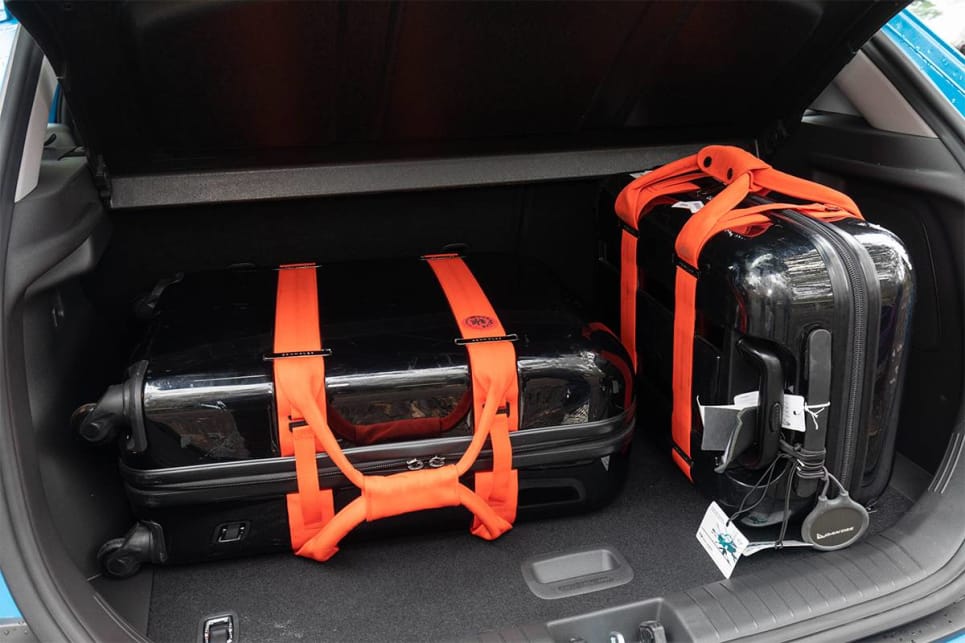 We attempted to fit the same stuff in each of these three cars - the CarsGuide pram and a pair of hard-cover suitcases. (image credit: Dean McCartney)
We attempted to fit the same stuff in each of these three cars - the CarsGuide pram and a pair of hard-cover suitcases. (image credit: Dean McCartney)
-
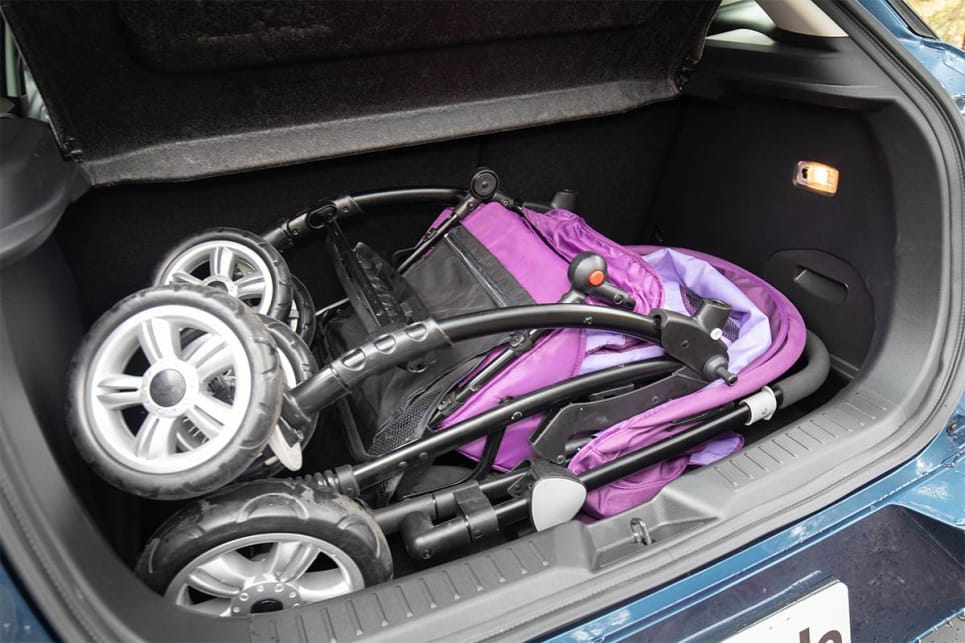 While the Mazda CX-3 featured a dual-level boot floor that allowed it to just fit our single-seat pram. (image credit: Dean McCartney)
While the Mazda CX-3 featured a dual-level boot floor that allowed it to just fit our single-seat pram. (image credit: Dean McCartney)
-
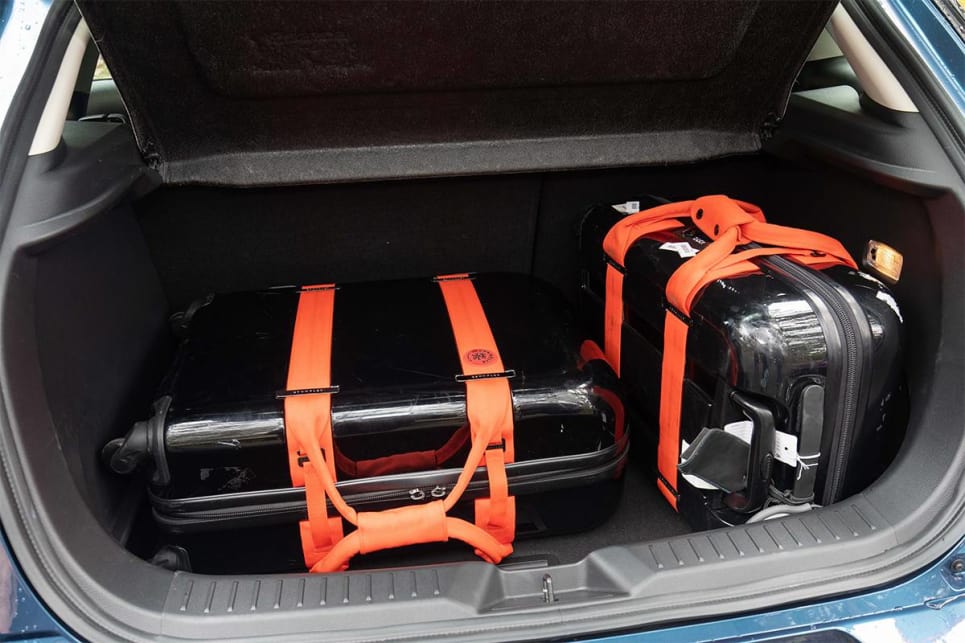 The CX-3's compact exterior dimensions affect the boot space. (image credit: Dean McCartney)
The CX-3's compact exterior dimensions affect the boot space. (image credit: Dean McCartney)
While the Mazda CX-3 featured a dual-level boot floor that allowed it to just fit our single-seat pram. The Kona wasn’t much better, and it has to be said - if you have very young children you ought to be taking a look elsewhere. The boot is too small to deal with a pram and all the baby stuff that comes with it. But the Kona is the only model here with roof rails, which means it’ll be the best to fit a roof rack system on top.
The only option if you need a big boot is the Honda - hands-down. It’s enormous, easily coping with our two suitcases, or the pram, or the entire lot with space to spare. And the HR-V takes practicality a step further with its clever rear seat system. The so-called 'Magic Seats' in the HR-V are superb if you need something that offers terrific cabin practicality.
| | Honda HR-V | Hyundai Kona | Mazda CX-3 |
| Score | 9 | 6 | 6 |

